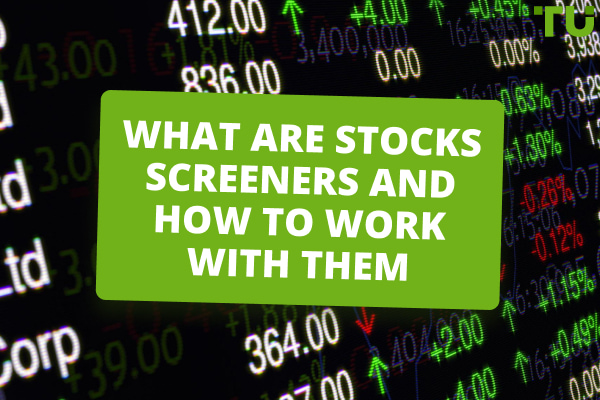How to track your Forex trading performance
In order to track Forex trading performance, traders use journals to analyze their trading performance, plan their goals and performance benchmarks, and regularly monitor how well actual results match planned goals. Important indicators to track your Forex trading: Profit Factor, Maximum Drawdown (MDD), Recovery Factor, Profitability, Sharpe Ratio and Win Rate.
If you are a trader seeking to improve your performance, then a Forex trade journa is a must-have tool. A trade journal is a record of all your trades, including the currency pair traded, trade size, entry and exit prices, profit or loss, and your reasoning for each trade.
By keeping a trade journal, you can identify your strengths and weaknesses, track your progress over time, and improve your overall trading performance.
Not keeping a trading journal can lead to several significant problems for a Forex trader. First, not maintaining an up-to-date trading journal hinders the ability to review and learn from past trades, making it challenging to identify recurring mistakes or successful strategies.
Without a journal, traders often struggle to maintain discipline and control emotional reactions during trades, increasing the risk of impulsive decisions.
The absence of a trading journal can also hinder long-term improvement, as it becomes challenging to track progress, refine strategies, and achieve consistent profitability.
Do you want to start trading Forex? Open an account on RoboForex!Basics on tracking trading results
A Forex trade journal is a valuable tool used to track and record trading activities. It serves as a comprehensive record-keeping system that documents each trade's details, including entry and exit points, position size, reasons for the trade, and emotions experienced during the trade.
Traders use journals to analyze their trading performance, identify strengths and weaknesses, and make informed decisions to improve their trading strategies.
The benefits of using a Forex trade journal include enhancing discipline, facilitating objective self-assessment, refining trading strategies, minimizing emotional biases, and ultimately increasing the potential for consistent profitability in the foreign exchange market.
Plan your goals and performance benchmarks
The first step in creating a Forex trade journal is to plan your goals and performance benchmarks. For example, check out this complete guide to building out a comprehensive trading plan.
Such a plan will help you crystalize answers to key questions. What do you hope to achieve with your trading? Do you have a specific profit target in mind? Do you want to improve your win rate? Once you know your goals, you can set specific performance benchmarks to track and monitor your progress.
For example, you might set a goal of making a profit of 10% per month. To track your progress towards this goal, you would need to track your monthly profits and losses. You could also set a benchmark for your win rate, such as aiming for a win rate of 60%.
Create a trade journal
To create an effective journal, you must record every trade that you make. This includes the following information:
-
Date and time of trade
-
Currency pair traded
-
Trade direction (long or short)
-
Trade size
-
Entry price
-
Exit price
-
Profit or loss
-
Reasoning for trade
You can record your trades in a physical notebook, a spreadsheet, or a dedicated trading journal app. Also, note that most trading platforms provide a built-in trading journal. Here is a list of top trading platforms offering trading jornals.
Regularly monitor how actual results are aligned with planned goals
Once you have a few weeks or months of trades recorded in your journal, you can start to review them regularly. This will help identify trends and patterns in your trading. For example, you may find that you are more profitable when trading certain currency pairs or trading during certain times of day. You may also find that you are more likely to make losing trades when you are feeling stressed or emotional.
By reviewing your journal regularly, you can gain valuable insights into your trading habits and make the necessary adjustments to improve your performance.
If necessary, find the causes of problems and correct them
If you find any problems in your trading, you can use your journal to help you identify the causes and correct them. For example, if you find that you are making a lot of losing trades on a particular currency pair, you may need to change your trading strategy or avoid trading that pair altogether.
You can also use your journal to identify any emotional problems that are affecting your trading. For example, if you find that you are more likely to make losing trades when you are feeling stressed, you may need to develop some coping mechanisms to help you manage your emotions.
Important metrics for tracking your Forex trade
-
Profit Factor
Profit Factor is an essential metric for tracking Forex trades as it provides valuable insights into the effectiveness of a trading strategy. It is calculated by dividing the total profit from winning trades by the total loss from losing trades. The result is a ratio that indicates how much profit is generated for every unit of loss incurred.
A Profit Factor greater than 1.0 suggests that the strategy is profitable, as it means that the total profits exceed total losses. A Profit Factor less than 1.0 indicates that the strategy is unprofitable because losses outweigh profits.
-
Maximum Drawdown (MDD)
MDD is a crucial metric for tracking Forex trades as it assesses the risk and potential loss associated with a trading strategy. MDD measures the largest peak-to-trough decline or loss in the value of a trading account during a specific period, typically expressed as a percentage.
-
Recovery Factor
Recovery Factor is an important metric for tracking Forex trades, especially when assessing the risk and profitability of a trading strategy. It quantifies the ability of a trading system or strategy to recover from losses and generate profits. Recovery Factor is typically expressed as a ratio and calculated as follows:
Recovery Factor = (Net Profit / Maximum Drawdown)
-
Profitability
Profitability is a fundamental metric for tracking Forex trades, as it directly reflects the success and effectiveness of a trading strategy. Profitability measures the ability of a trader or trading system to generate profits from trading activities. It is typically quantified as the net profit earned from all trades over a specific period.
-
Sharpe Ratio
The Sharpe Ratio is a crucial metric for tracking Forex trades, and it plays a significant role in evaluating the risk-adjusted performance of a trading strategy. It was developed by Nobel laureate William F. Sharpe and is used widely in the financial industry to assess the return on investment relative to the risk taken. The Sharpe Ratio is calculated as follows:
Sharpe Ratio = (Average Return of the Strategy - Risk-Free Rate) / Standard Deviation of Returns
-
Win Rate
This is the percentage of winning trades relative to the total number of trades. A high win rate is indicative of a strategy's ability to produce winning trades consistently.
One way to achieve success with such metrics is to open an account with a broker that offers a MetaTrader 4 Forex platform that has a built-in trader’s journal.
Best Forex brokers


Tools and Software for Tracking Trading Performance
To optimize the process of monitoring trading results, traders can leverage various applications, programs, and platforms. These resources not only save time but also deliver valuable insights into trading patterns and performance metrics. Here are some popular options traders use:
MetaTrader
Widely used among Forex traders, MetaTrader 4 (MT4) and its successor MetaTrader 5 (MT5) include built-in analytical functions allowing traders to watch their performance and analyze their trading history.
Myfxbook
As an online Forex analytics platform, Myfxbook permits traders to track, analyze, and compare their trading outcomes. By linking one's account, users gain access to:
Detailed stats on profit, loss, and risk.
Performance charts and graphs.
Automated system evaluation.
Social and copy trading.
TradingView
A popular charting and social media site for traders, TradingView supplies a range of performance tracking functions, such as:
Advanced charts across timeframes with customizable indicators.
Real-time market data and news.
Social features for sharing ideas and strategies.
Price, volume, and technical alerts and notifications.
Paper trading to test without risk.
Edgewonk
Designed to enhance decision-making and pattern identification, Edgewonk is trading journal and analysis software offering:
Customizable journals for recording and reviewing trades.
Visual representations of stats and metrics.
Identification of strategy strengths and weaknesses.
Simulation for testing and modifying plans.
TradeBench
As a cloud-based analytics platform, TradeBench allows performance tracking, analysis, and optimization via imported trade data from various brokers, including:
Comprehensive reporting and analytics.
Journaling and note-taking.
Risk management tools and review.
Trade simulation and backtesting.
Each tool caters to different needs, so incorporating one or more into one's routine can effectively monitor and dissect performance for improved decisions and outcomes.
Conclusion
The advantages of maintaining a trading journal for Forex traders cannot be overstated. It serves as a powerful tool for self-improvement, offering insights into one's trading habits, strategies, and emotional responses. By documenting each trade, traders can identify patterns, strengths, and weaknesses, ultimately paving the way for more informed decisions. In the dynamic world of Forex trading, a well-maintained trading journal generates accountability, discipline, and continuous growth, helping traders navigate the turbulent waters of the financial markets with greater confidence and success.
FAQs
How do I track my trading progress?
A Forex trade journal is essential because it helps traders systematically record, track, and analyze their trading progress. This allows Forex traders to identify strengths and weaknesses in their strategies. It provides valuable insights into trading decisions, emotional reactions, and overall performance, leading to continuous improvement and better risk management.
How do you know if you are a good Forex trader?
Evaluate your trading consistency by analyzing your track record over a significant period. For example, you can use a Forex trade journal to enhance your trading to promote discipline, objectivity, and self-awareness. Then, reflect on your emotional control and discipline during trades. A good trader can maintain composure and stick to their trading plan even in volatile markets.
What should I include in my Forex trading journal?
Your Forex trading journal should include essential details such as entry and exit points, position size, reasons for taking the trade, stop-loss and take-profit levels, as well as emotional notes. Additionally, record the market conditions, timeframes, and any external factors influencing your trades.
How often should I update my Forex trading journal?
It's recommended to update your Forex trading journal after every trade, as this ensures accuracy and immediate reflection on your trading decisions. Regular journaling enables real-time learning and the ability to make necessary adjustments to your trading approach. Updating your trading journal after every trade is essential for any Forex trader who wants to improve their performance.
Glossary for novice traders
-
1
Broker
A broker is a legal entity or individual that performs as an intermediary when making trades in the financial markets. Private investors cannot trade without a broker, since only brokers can execute trades on the exchanges.
-
2
Trading
Trading involves the act of buying and selling financial assets like stocks, currencies, or commodities with the intention of profiting from market price fluctuations. Traders employ various strategies, analysis techniques, and risk management practices to make informed decisions and optimize their chances of success in the financial markets.
-
3
Forex Trading
Forex trading, short for foreign exchange trading, is the practice of buying and selling currencies in the global foreign exchange market with the aim of profiting from fluctuations in exchange rates. Traders speculate on whether one currency will rise or fall in value relative to another currency and make trading decisions accordingly.
-
4
Backtesting
Backtesting is the process of testing a trading strategy on historical data. It allows you to evaluate the strategy's performance in the past and identify its potential risks and benefits.
-
5
CFD
CFD is a contract between an investor/trader and seller that demonstrates that the trader will need to pay the price difference between the current value of the asset and its value at the time of contract to the seller.
Team that worked on the article
Thomas Wettermann is an experienced writer and a contributor to the Traders Union website. Over the last 30 years, he has written posts, articles, tutorials, and publications on several different high tech, health, and financial technologies, including FinTech, Forex trading, cryptocurrencies, metaverses, blockchain, NFTs and more. He is also an active Discord and Crypto Twitter user and content producer.
Dr. BJ Johnson is a PhD in English Language and an editor with over 15 years of experience. He earned his degree in English Language in the U.S and the UK. In 2020, Dr. Johnson joined the Traders Union team. Since then, he has created over 100 exclusive articles and edited over 300 articles of other authors.
Mirjan Hipolito is a journalist and news editor at Traders Union. She is an expert crypto writer with five years of experience in the financial markets. Her specialties are daily market news, price predictions, and Initial Coin Offerings (ICO).









